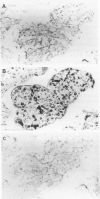Abstract
Villitis of unknown etiology (VUE) is a common placental lesion and an important cause of intrauterine growth retardation and recurrent reproductive failure. Two theories have been proposed to explain VUE. One proposes that VUE is an exclusively fetal immune response to microbial antigen, whereas the other suggests that maternal cells cross the maternal-fetal interface and mount an immune response to fetal antigens. To differentiate between these alternatives, we performed in situ hybridization using X and Y chromosome-specific probes and immunostaining for CD3 and CD45 on VUE placentas from male infants. A total of eight foci and 40 villi were studied from four male VUE placentas. Controls included nonaffected villi from each male VUE placenta, a female VUE placenta, and male and female tonsils. Affected villi showed a major proportion of XX (maternal) cells (range 30 to 54%). An appropriate percentage of the remaining (fetal) cells contained Y chromosomes. The fraction of cells within the eight foci staining for CD3 (T lymphocytes) ranged from 34 to 57%, whereas the fraction staining for CD45/LCA (total leukocytes) ranged from 45 to 74%. The proportion of maternal cells within each focus was significantly correlated with the number of CD3-positive T lymphocytes but not with the number of CD3-negative leukocytes. We conclude that maternal cells, probably CD3-positive T cells, cross the maternofetal barrier and participate in VUE.
Full text
PDF
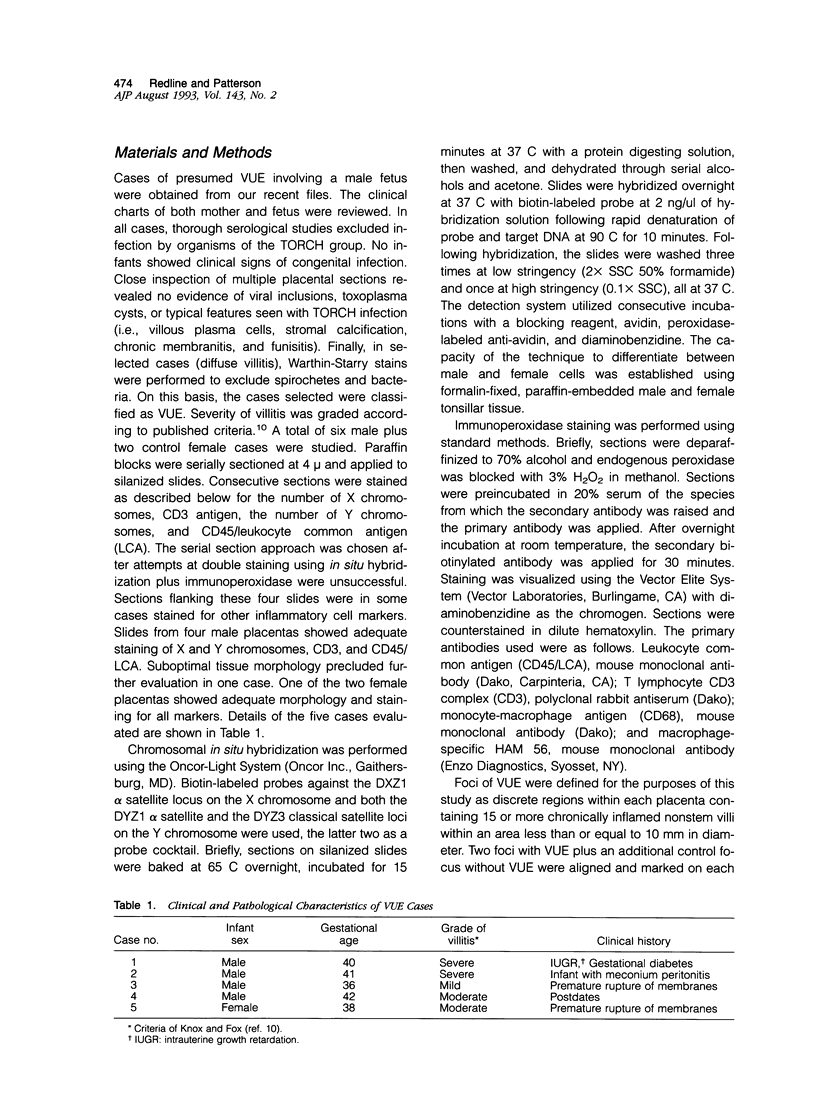
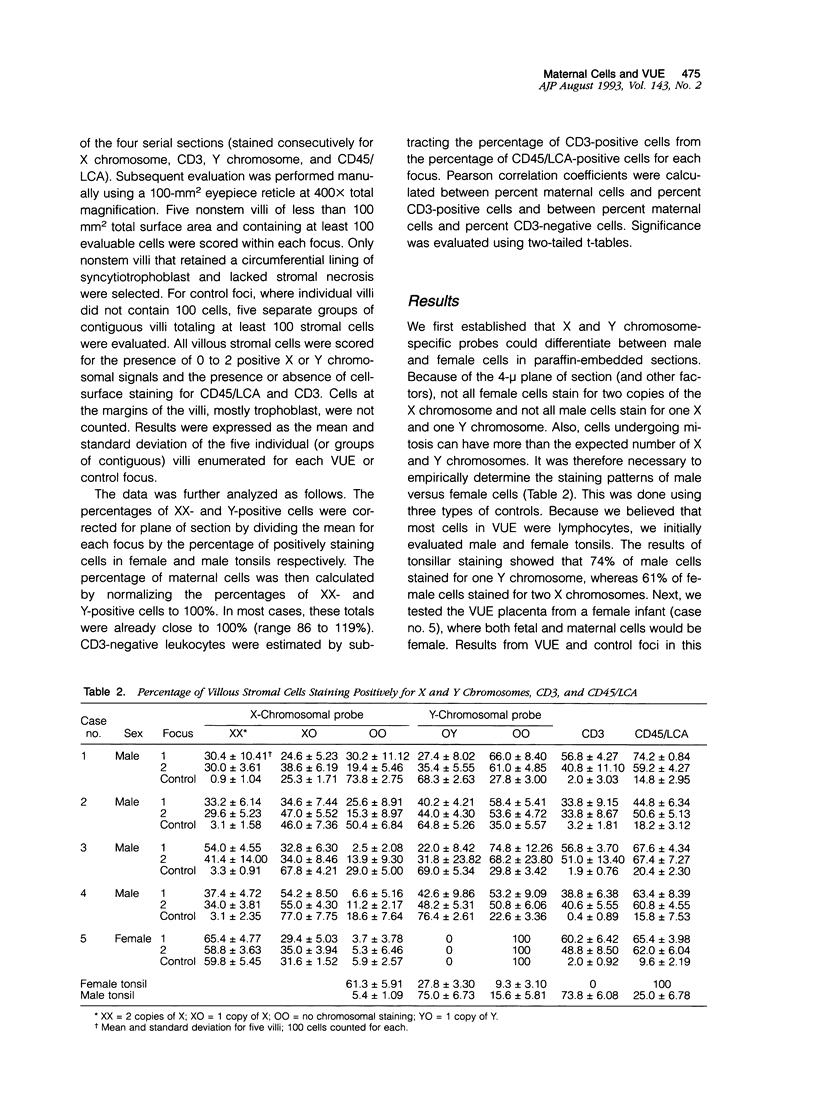

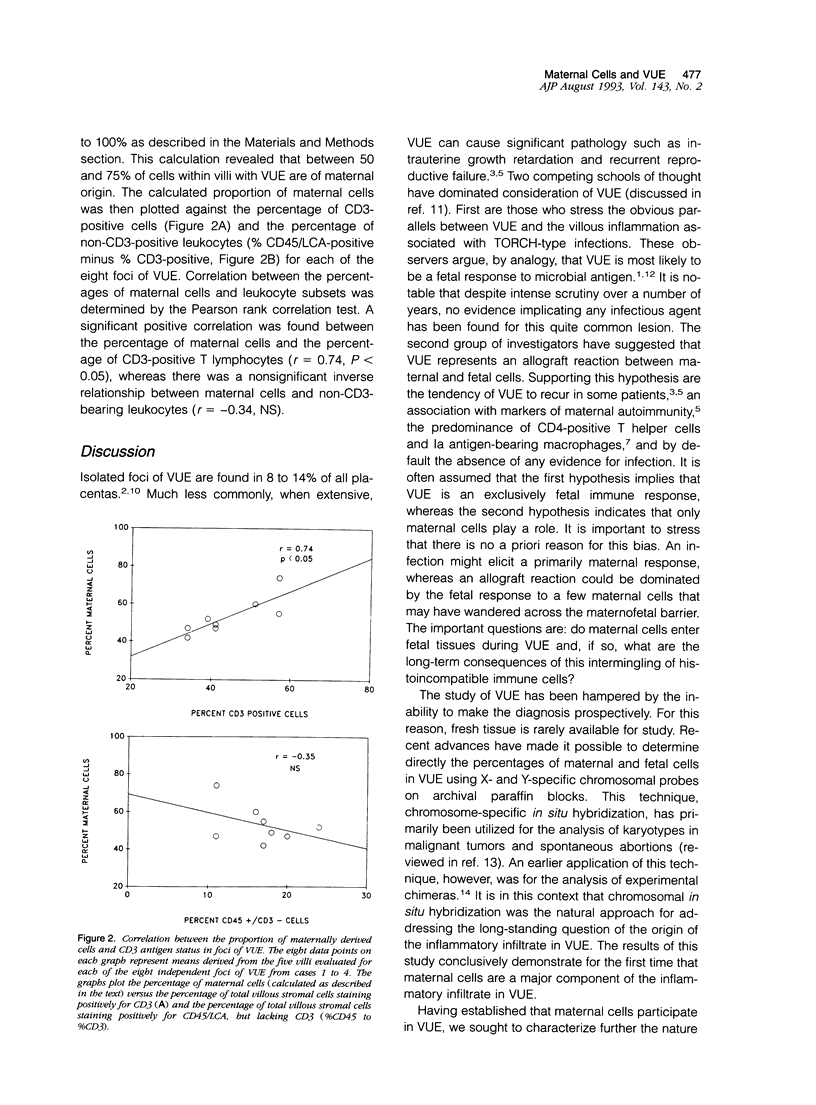
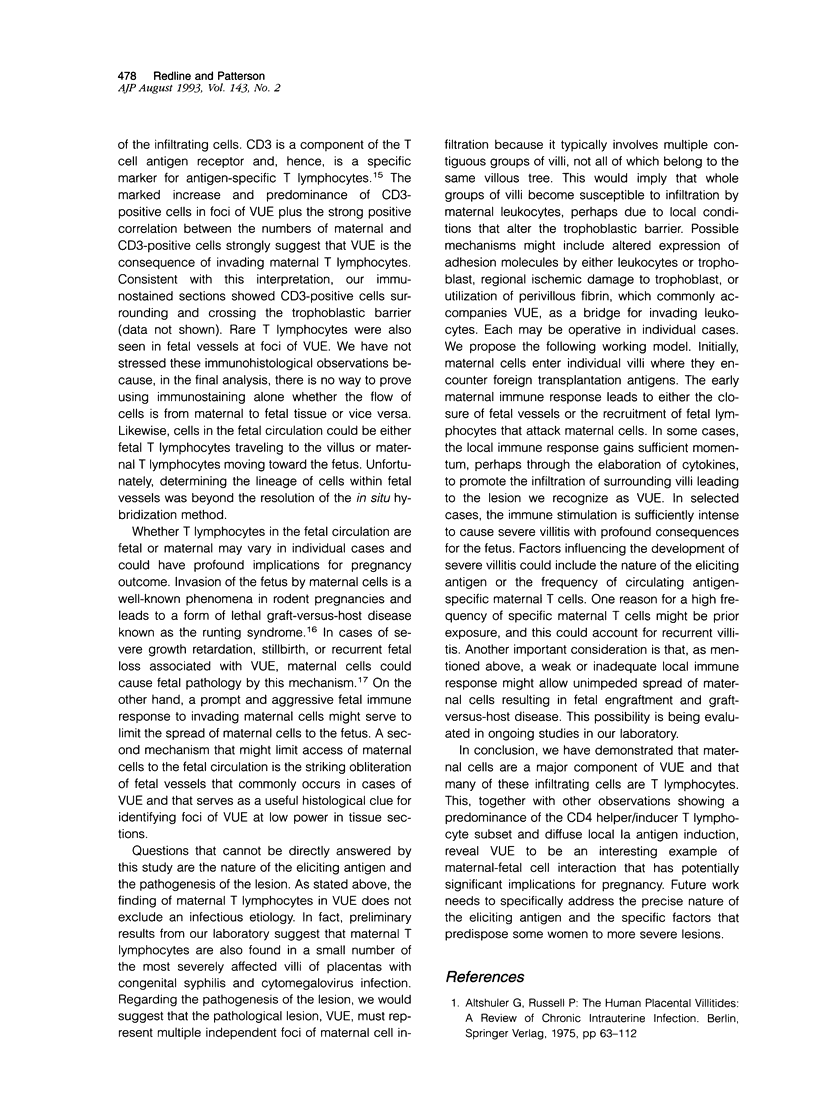
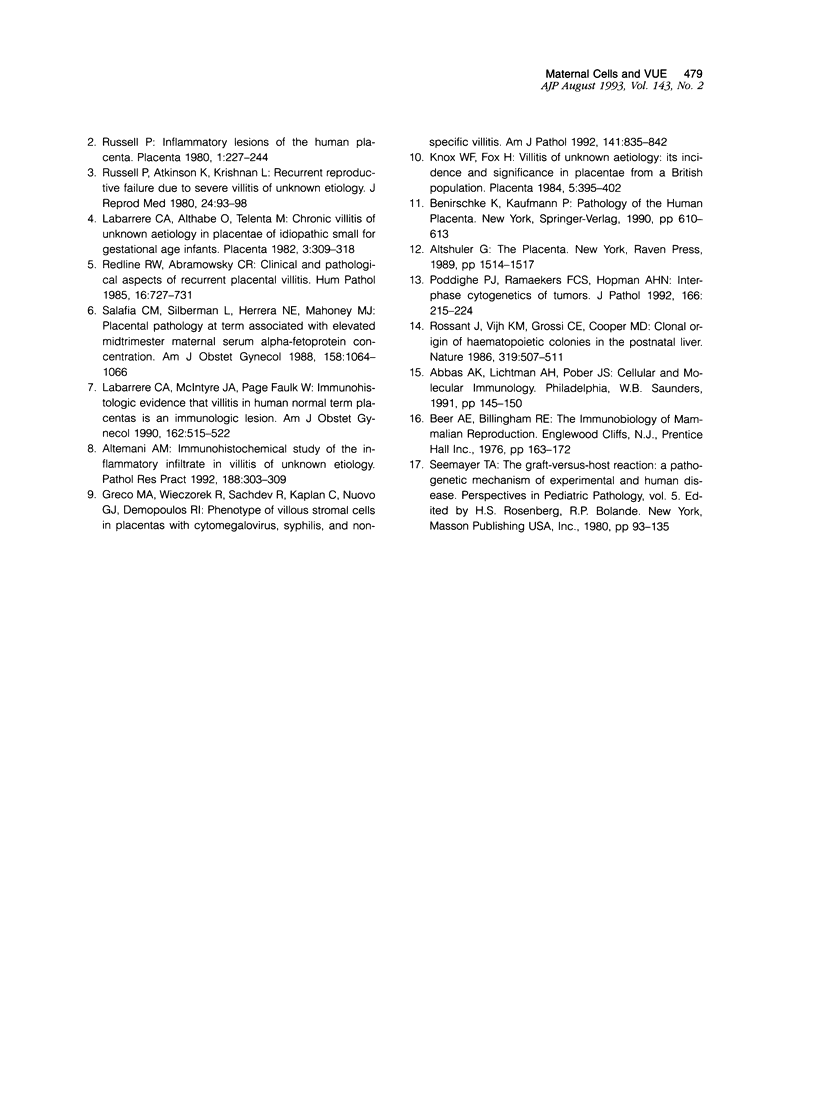
Images in this article
Selected References
These references are in PubMed. This may not be the complete list of references from this article.
- Altemani A. M. Immunohistochemical study of the inflammatory infiltrate in villitis of unknown etiology. A qualitative and quantitative analysis. Pathol Res Pract. 1992 Apr;188(3):303–309. doi: 10.1016/S0344-0338(11)81208-2. [DOI] [PubMed] [Google Scholar]
- Altshuler G., Russell P. The human placental villitides: a review of chronic intrauterine infection. Curr Top Pathol. 1975;60:64–112. [PubMed] [Google Scholar]
- Greco M. A., Wieczorek R., Sachdev R., Kaplan C., Nuovo G. J., Demopoulos R. I. Phenotype of villous stromal cells in placentas with cytomegalovirus, syphilis, and nonspecific villitis. Am J Pathol. 1992 Oct;141(4):835–842. [PMC free article] [PubMed] [Google Scholar]
- Knox W. F., Fox H. Villitis of unknown aetiology: its incidence and significance in placentae from a British population. Placenta. 1984 Sep-Oct;5(5):395–402. doi: 10.1016/s0143-4004(84)80019-3. [DOI] [PubMed] [Google Scholar]
- Labarrere C. A., McIntyre J. A., Faulk W. P. Immunohistologic evidence that villitis in human normal term placentas is an immunologic lesion. Am J Obstet Gynecol. 1990 Feb;162(2):515–522. doi: 10.1016/0002-9378(90)90421-3. [DOI] [PubMed] [Google Scholar]
- Labarrere C., Althabe O., Telenta M. Chronic villitis of unknown aetiology in placentae of idiopathic small for gestational age infants. Placenta. 1982 Jul-Sep;3(3):309–317. doi: 10.1016/s0143-4004(82)80007-6. [DOI] [PubMed] [Google Scholar]
- Poddighe P. J., Ramaekers F. C., Hopman A. H. Interphase cytogenetics of tumours. J Pathol. 1992 Mar;166(3):215–224. doi: 10.1002/path.1711660303. [DOI] [PubMed] [Google Scholar]
- Redline R. W., Abramowsky C. R. Clinical and pathologic aspects of recurrent placental villitis. Hum Pathol. 1985 Jul;16(7):727–731. doi: 10.1016/s0046-8177(85)80159-3. [DOI] [PubMed] [Google Scholar]
- Rossant J., Vijh K. M., Grossi C. E., Cooper M. D. Clonal origin of haematopoietic colonies in the postnatal mouse liver. Nature. 1986 Feb 6;319(6053):507–511. doi: 10.1038/319507a0. [DOI] [PubMed] [Google Scholar]
- Russell P., Atkinson K., Krishnan L. Recurrent reproductive failure due to severe placental villitis of unknown etiology. J Reprod Med. 1980 Feb;24(2):93–98. [PubMed] [Google Scholar]
- Russell P. Inflammatory lesions of the human placenta. III. The histopathology of villitis of unknown aetiology. Placenta. 1980 Jul-Sep;1(3):227–244. doi: 10.1016/s0143-4004(80)80005-1. [DOI] [PubMed] [Google Scholar]
- Salafia C. M., Silberman L., Herrera N. E., Mahoney M. J. Placental pathology at term associated with elevated midtrimester maternal serum alpha-fetoprotein concentration. Am J Obstet Gynecol. 1988 May;158(5):1064–1066. doi: 10.1016/0002-9378(88)90220-7. [DOI] [PubMed] [Google Scholar]



